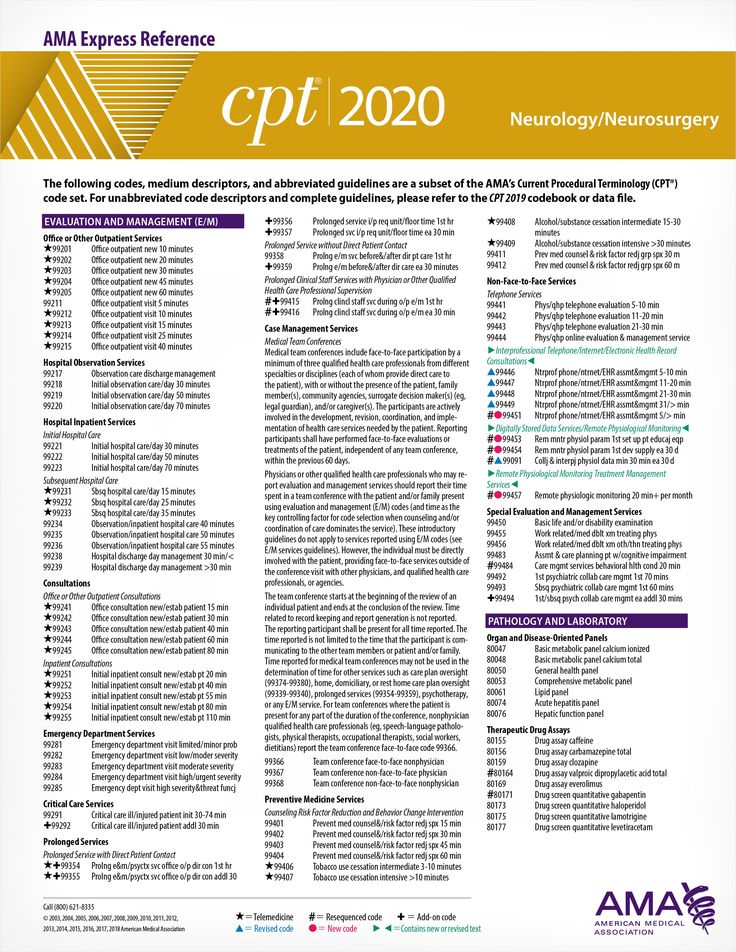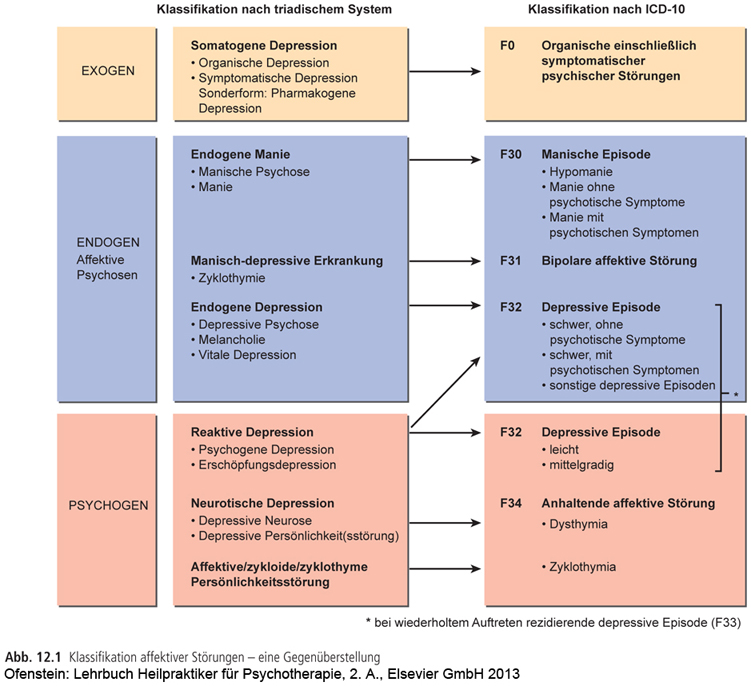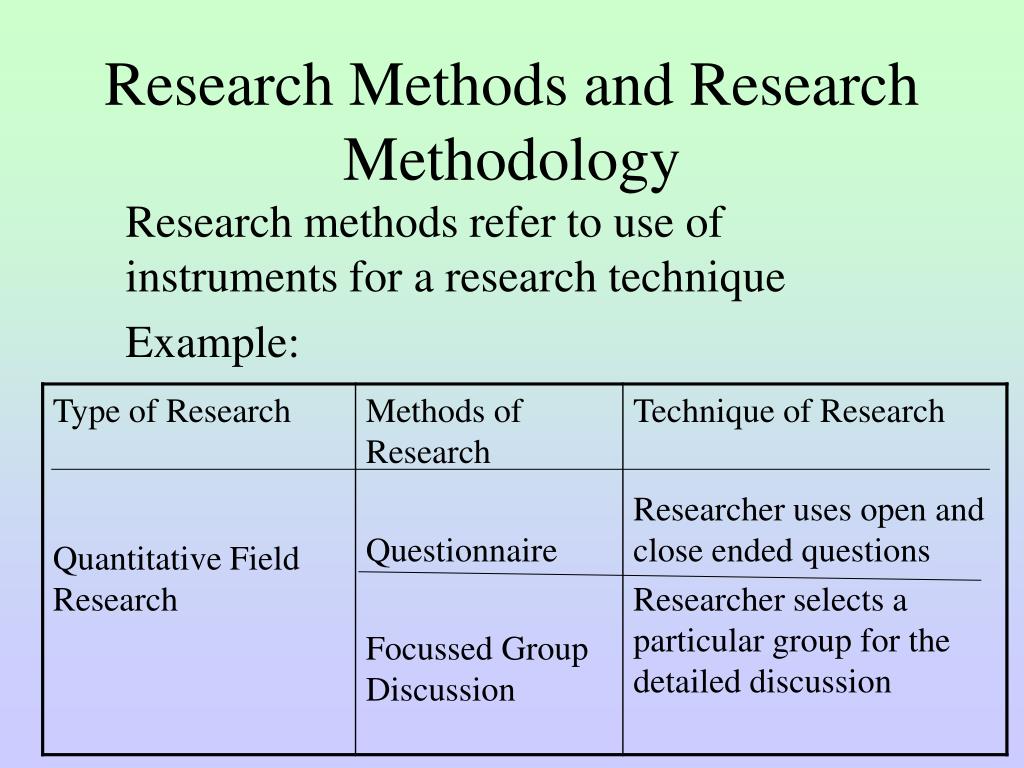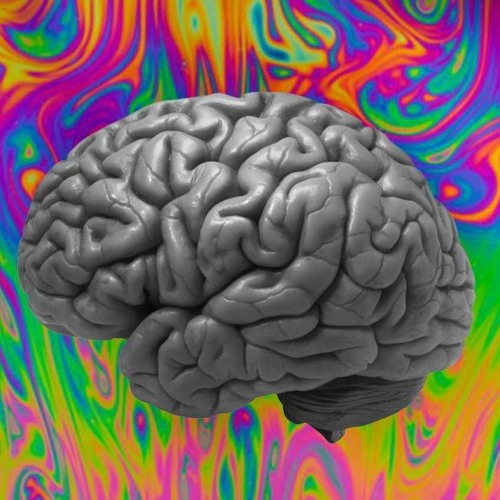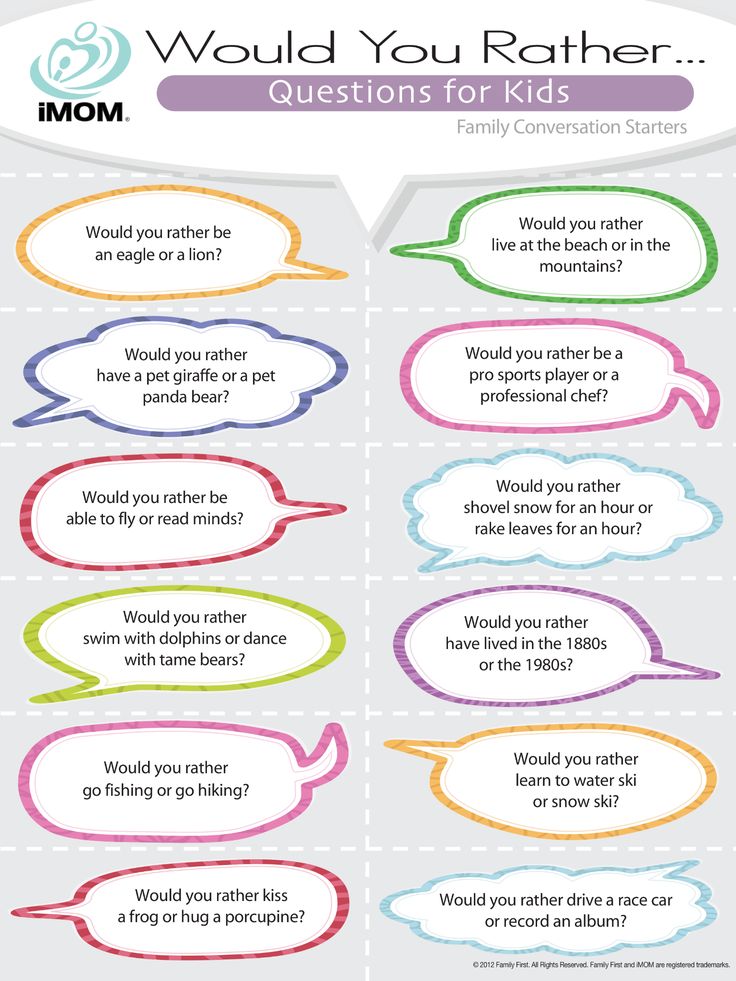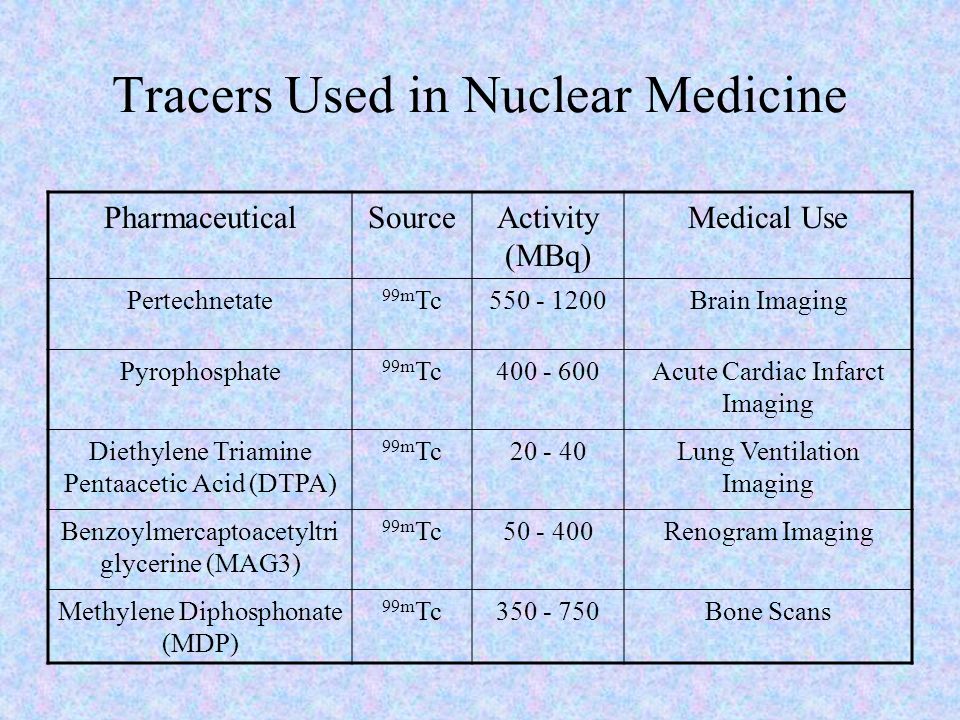Anti social kids
Helping Your Child Move from Anti-Social to Pro-Social Behaviors
Contributed by:
Allison Davis Maxon, LMFT
We all enter the world ready to attach because this is how we get our most basic and primary needs met. The human infant, like other high functioning mammals, is completely dependent on their primary caregivers to get all of their needs met—survival, safety, food, shelter, stimulation, comfort. For us to understand where some of our children’s most challenging behaviors come from, we must first realize just how much neglect and trauma affect every aspect of a child’s development. We are social-emotional beings with an innate need to connect and form meaningful attachment relationships. Every interpersonal skill required for us to be successful in creating and sustaining these relationships must be learned.
Trauma and the Developing Child
Trauma, neglect, and multiple disruptions in attachment relationships have a significant negative impact on a child’s ability to learn appropriate interpersonal skills. In fact, many children who have had these experiences develop defensive strategies to avoid interpersonal relationships. The relationship challenges then result in the children remaining in high states of chronic distress where they are unable to get their most basic and primary needs for connection and attachment met. It is important to note that it is through the primary parent/child attachment relationship that children become pro-socialized. Humans have an extended childhood in order to maximize social, emotional, cognitive, and conscience facilitating experiences for each developmental stage of the child. Learning pro-social skills—how to get along with others, how to have empathy for those in distress, how to manage one’s own distress, how to take turns, how to live in community with others, how to share and show compassion—are all critical experiences that shape a child’s neurobiological development.
So what happens when children miss critical, sensory-rich, pro-socializing experiences? What often occurs when children have chronic and/or prolonged exposure to traumatic distress, multiple disruptions in attachment, neglect, interpersonal violence, institutional care, or maltreatment? Simply put, we see increased anti-social behaviors. It is imperative for both parents and professionals to clearly understand that children exhibiting anti-social behaviors like hitting, lying, stealing, hurting animals, manipulating, and defiance are giving a window into their early life experiences—experiences which would probably overwhelm you with terror and pain if you actually had to feel what the child felt during their suffering.
It is imperative for both parents and professionals to clearly understand that children exhibiting anti-social behaviors like hitting, lying, stealing, hurting animals, manipulating, and defiance are giving a window into their early life experiences—experiences which would probably overwhelm you with terror and pain if you actually had to feel what the child felt during their suffering.
If left unresolved, complex childhood trauma and developmental trauma will often work their way into the next generation. We know that 75 percent of perpetrators of child sexual abuse report to have themselves been sexually abused as children. (van der Kolk, 2005) Data tells us that most interpersonal trauma on children is perpetrated by adult victims of childhood trauma and neglect. (van der Kolk, 2005)
Experience Is the Architect of the Brain
Anti-social behaviors occur when children have been deprived of thousands upon thousands of sensory-rich, pro-socializing experiences that they would have received through primary parent/ child attachment experiences. The young child’s brain is experience dependent. The actual wiring of the brain’s circuitry is occurring through these numerous sensory-rich experiences with the primary attachment figure. The human brain is both malleable and mutable, such that its structural organization reflects the history of the organism. (Luu and Tucker, 1996) In essence, experience is the architect of the brain. This is true whether or not those early life experiences happen to be positive, responsive, and nurturing or negative, violent, and traumatic.
The young child’s brain is experience dependent. The actual wiring of the brain’s circuitry is occurring through these numerous sensory-rich experiences with the primary attachment figure. The human brain is both malleable and mutable, such that its structural organization reflects the history of the organism. (Luu and Tucker, 1996) In essence, experience is the architect of the brain. This is true whether or not those early life experiences happen to be positive, responsive, and nurturing or negative, violent, and traumatic.
For young children exposed to chronic states of distress in which their most basic needs for safety, attachment, and nurturance are not met, the result can be catastrophic for the developing self. These children may have both social-emotional skill deficits as well as neurobiological effects that have shaped the young brain to be trauma-reactive. Unmanageable distress for the infant and young child exposes their neurobiological system to increased levels of cortisol and adrenaline, which subsequently exposes their sensory system to being easily triggered into a dysregulated state. As a result, a simple directive or demand (“It’s time to do homework!”) can easily overwhelm a trauma-reactive child who has minimal ability to regulate her neurobiological states once triggered.
As a result, a simple directive or demand (“It’s time to do homework!”) can easily overwhelm a trauma-reactive child who has minimal ability to regulate her neurobiological states once triggered.
Anti-Social Behaviors as Survival Strategy
It is against this backdrop that we can more insightfully understand our children’s complex behaviors related to their history of deprivation, trauma, pain, and suffering. Lying, stealing, hoarding food, lack of empathy, and aggression are common behaviors for children who have experienced trauma. Traditional parenting interventions and techniques seek to change children’s behavior through principals of loss/punishment. For non-traumatized children, using punishment and emotional distance (such as time-outs or grounding in their room) to change a child’s behavior is effective. It is primarily effective because the child is attached to the parent and the parent is using years of attachment history to motivate the child to change.
For children with early chronic neglect and trauma, these traditional ideas of loss/punishment and emotional distance will be ineffective. The child has missed critical developmental milestones that would have given him the social, emotional, and cognitive competencies to learn from consequences, punishments, or emotional distance. Trust and truth-telling are the foundation of loving familial relationships. For children with no experience of permanence, safety, and nurturance, anti-social behaviors such as lying or manipulating were often necessary and effective survival strategies.
The child has missed critical developmental milestones that would have given him the social, emotional, and cognitive competencies to learn from consequences, punishments, or emotional distance. Trust and truth-telling are the foundation of loving familial relationships. For children with no experience of permanence, safety, and nurturance, anti-social behaviors such as lying or manipulating were often necessary and effective survival strategies.
In addition, a child that is not securely attached to his primary caregiver will not be motivated to please his parent. In fact, the child could be motivated to frustrate or provoke their parent. Hitting, lying, stealing, and manipulating are quite common when children are defending themselves against attaching. These behaviors should be understood as a defensive strategy, a learned way of coping with terror and fright. For these children, attaching means flooding their sensory system with triggering sensations that feel overwhelming, disorganizing, or terrifying. It is important to note that children do not have insight into these triggers and dynamics; they are using defensive strategies to avoid more pain and distress.
It is important to note that children do not have insight into these triggers and dynamics; they are using defensive strategies to avoid more pain and distress.
Leading the Dance
What the child needs most in order to heal—a deep, meaningful, sustained primary attachment relationship—is the thing she fears the most. The inherent challenge for the parent who is parenting the child of loss, trauma, and multiple placements is that their traditional view of parenting (which is primarily based on the way they were parented themselves in combination with what is considered to be culturally acceptable) will be highly ineffective.
We are all social-emotional beings and we are deeply affected by the emotions of those around us. Most parents quickly feel exhausted, overwhelmed, or triggered by their child’s distressed states and maladaptive behaviors. Emotions are contagious. A child’s angry or hurtful behavior is often mirrored by a distressed parent. But the expression of parental frustration and anger in response to the child’s misbehavior has the effect of reinforcing the misbehavior. For the parent to begin to establish a meaningful, sustained primary attachment relationship with a trauma-reactive child, a new template must be formed. The parent must learn to lead a dance with the child that creates the primary parent/child attachment relationship, from which the child’s pro-social development can be nurtured.
For the parent to begin to establish a meaningful, sustained primary attachment relationship with a trauma-reactive child, a new template must be formed. The parent must learn to lead a dance with the child that creates the primary parent/child attachment relationship, from which the child’s pro-social development can be nurtured.
As the leader of the dance, the parent must be able to set the affective tone in which a trusted, committed, permanent relationship can be established, and eventually, over time, create the context in which healing can occur. The most critical component of this intimate dance between parent and child is the emotional tone and intelligence of the parent. It is the emotion of the parent that the child is experiencing through their senses (facial cues, body posture, tone of voice, etc.).
Parents with increased emotional intelligence are not just emotionally reacting to external stressors, but rather are able to model healthy ways of managing their own internal distress. For example a parent might say, “Mom is frustrated right now, I’m going to take a few minutes to calm down before we talk about how we’re going to solve this problem.” The parent takes a walk, calls a friend, rides a bike, plays basketball, reads, journals, or asks “Can anyone tell Mom a funny joke right now? I really need a good laugh.” Here the parent is both leading the emotional dance and modeling healthy emotional coping strategies. This is effective because the primary way children learn is through imitation.
For example a parent might say, “Mom is frustrated right now, I’m going to take a few minutes to calm down before we talk about how we’re going to solve this problem.” The parent takes a walk, calls a friend, rides a bike, plays basketball, reads, journals, or asks “Can anyone tell Mom a funny joke right now? I really need a good laugh.” Here the parent is both leading the emotional dance and modeling healthy emotional coping strategies. This is effective because the primary way children learn is through imitation.
As the leader of the dance, the trauma-informed parent allows for missteps by the child who has never successfully danced in any “permanent” way. A child who has had too many changes of partners is a child who will have developed many defensive strategies to avoid further psychic pain and trauma. Lying and manipulating behaviors help protect the child from becoming attached (remember their attachment experiences brought suffering, terror, fear, and loss). These children often prefer the dance of isolation to the continued suffering that occurs with the repeated rejection and loss of not having their primary attachment needs met.
A parent who is being nurturing and comforting might be met with anger and hostility from their child: “Get away from me! Leave me alone!” These missteps allow the parent to give voice to their child’s distress, acknowledging how painful, scary, and overwhelming learning the dance of attachment can be: “I know this is hard and that getting close is scary. I want you to know that I’m here for you.” Giving yourself and your child permission to make mistakes while you are learning these complex dance steps is critical. Practice levity, forgiveness, and really good self care!
Knowing Yourself
Since most parents have never experienced this amount of core trauma themselves, as they begin to intimately engage with their trauma-reactive child, the experience often feels overwhelmingly painful or distressing for the parent. This pain, though, can create a critical opportunity for parents to explore their own parenting history and style as they are now in the heat of the parent/child attachment dance.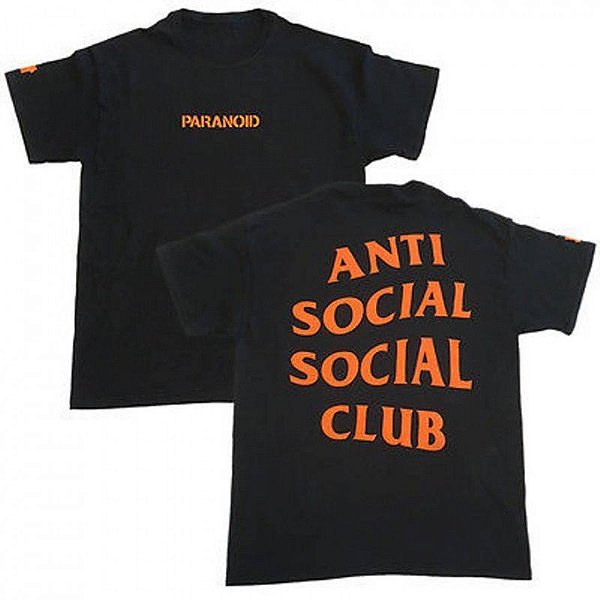 Personal intelligence and insight into one’s own mind, motivations, beliefs, and triggers are critical components to being able to lead the dance of attachment. As parents, many of our most impactful childhood experiences are encoded in implicit memory and are outside of conscious awareness. (To further explore one’s own parenting style and history, check out
Parenting From the Inside Out by Dan Siegel and Mary Hartzell and Wounded Children, Healing Homes by Jayne Schooler, Betsy Keefer Smalley, and Timothy J. Callahan.)
Personal intelligence and insight into one’s own mind, motivations, beliefs, and triggers are critical components to being able to lead the dance of attachment. As parents, many of our most impactful childhood experiences are encoded in implicit memory and are outside of conscious awareness. (To further explore one’s own parenting style and history, check out
Parenting From the Inside Out by Dan Siegel and Mary Hartzell and Wounded Children, Healing Homes by Jayne Schooler, Betsy Keefer Smalley, and Timothy J. Callahan.)
Teaching Pro-Social Behaviors
For the child with increased anti-social or maladaptive behaviors due to complex trauma, parents must make a paradigm shift away from traditional or punitive parenting strategies toward a style that uses attachment-facilitating interventions based on principals of addition and developmental need.
Developmentally, children must first have basic trust that their primary need for attachment, stability, safety, and nurturance will be met. To establish this basic trust, parents must use parenting interventions designed to add the pro-socializing, sensory-rich experiences the child needs. Through these experiences, children can learn social and emotional interpersonal skills that other children likely learned at much earlier ages. These interventions need to be both reactive (what the parent needs to do in response to the current behavior/situation) and pro-active (what the parent can practice with the child every day to add the pro-socializing experiences the child needs to learn self-regulation, impulse control, empathy, problem-solving skills, emotion recognition, regulation, and management).
To establish this basic trust, parents must use parenting interventions designed to add the pro-socializing, sensory-rich experiences the child needs. Through these experiences, children can learn social and emotional interpersonal skills that other children likely learned at much earlier ages. These interventions need to be both reactive (what the parent needs to do in response to the current behavior/situation) and pro-active (what the parent can practice with the child every day to add the pro-socializing experiences the child needs to learn self-regulation, impulse control, empathy, problem-solving skills, emotion recognition, regulation, and management).
For example, if my seven-year-old son consistently hits his younger sister when she takes his toy, how can I help him manage his aggressive impulses? First, I remove my child from the stimulating situation into a safe, non-stimulating environment and help him calm down. I have empathy for his distress and say, “It’s hard when someone takes your toy. ” Once he’s calm, I ask “Are you ready to solve the problem with your sister? Do you need mom’s help to solve the problem?”
” Once he’s calm, I ask “Are you ready to solve the problem with your sister? Do you need mom’s help to solve the problem?”
Children who do not regulate well and have missed critical developmental milestones will need the parents’ executive functioning to help them think through the social-emotional problems that occur in their daily interactions. If my son has missed thousands upon thousands of sensory-rich, pro-socializing experiences, of course he will hit his little sister when she takes his toy.
Next, I need to help him practice sharing, taking turns, and learning what to do when someone takes something from you so that the lived experience of sharing and problem solving is integrated into his neurobiological system. All children need to be able to first regulate their emotions before they can access their thinking and decision-making skills.
Since I know my son consistently struggles with being angry and impulsive, my pro-active strategy includes providing him with the sensory rich social-emotional experiences he needs to learn these critical relational and problem-solving skills. First I have to remember that he is not the problem! His aggressive, reactive, and impulsive behavior is the problem.
First I have to remember that he is not the problem! His aggressive, reactive, and impulsive behavior is the problem.
Traumatic memories are encoded and stored within the limbic structures of his brain. These same regions must be activated to create emotional arousal based on pleasure, excitement, and mutually enjoyable social interaction. I let him know that every day we’re going to have fun practicing what to do when someone takes your toy or makes you mad. The daily role play should begin with playful engagement—just me and my child playing with toys on the floor. Then I tell him to take my toy without asking. My responses vary from crying, to getting mad, to running away, to asking him to give it back.
Here I simply want him to experience the range of choices and options that I have in deciding how to respond. I remain mindful that because he is trauma-reactive, he is not thinking through his choices; he’s simply reacting in a state of distress. Next we practice Mom taking the toy from him, letting him know that the ultimate goal is for him to be able to put words to his feelings and tell me to please give back the toy. This targeted behavioral training is effective in improving social and emotional problem solving and conflict management over time. The practice is fun and experiential, and we take turns playing various roles. This allows the child’s sensory system to experience the pro-socializing behaviors that were missed at earlier stages and that are necessary to activate and change the limbic structures of his brain.
This targeted behavioral training is effective in improving social and emotional problem solving and conflict management over time. The practice is fun and experiential, and we take turns playing various roles. This allows the child’s sensory system to experience the pro-socializing behaviors that were missed at earlier stages and that are necessary to activate and change the limbic structures of his brain.
Using principals of addition and attachment-facilitating interventions will give my child the pro-socializing experiences he needs to heal, thrive, and become a productive member of society.
Antisocial behavior in children: Causes and examples
Misbehavior is common among children. However, repeated and persistent defiance, displays of aggression, hostility, and destructive tendencies may be signs of childhood antisocial behavior.
Many people exhibit antisocial behavior at some point in their life. Children show positive and negative social behaviors as they develop and mature.
In some people, antisocial behaviors may persist into adulthood and lead to more serious behavioral problems if not addressed early.
In this article, we explore antisocial behavior in children and discuss its risk factors and causes. We also give examples of childhood antisocial behavior, including some of its early signs.
Antisocial behaviors are any acts that violate social norms and harm the basic rights of others. These include actions intended to:
- harm or injure others
- damage property
- defy generally accepted rules or authority figures
- break laws
A person may direct antisocial behaviors involving hostile or aggressive actions toward family members, teachers, peers, or other adults. Or they may exhibit more subtle nonaggressive behaviors, such as noncompliance, rule-breaking, lying, stealing, or destruction of property.
Antisocial behavior may be present in children as young as 3 or 4 years old and during adolescence.
A combination of individual and environmental factors can increase the risk of antisocial behavior.
- Personality: A 2016 study found that individual factors, including lower levels of empathy and greater impulsivity, are potential predictors of cyber-aggression or antisocial behavior online.
- Parenting styles and practices: A 2019 study found that authoritarian parenting styles (those that are strict, lacking in warmth, and reliant on punishment) are associated with externalizing behaviors in adolescents, whereas an authoritative styles (those featuring emotional support with firm boundaries and limits) have a protective effect on adolescents’ behavior. Parenting dimensions of affection, communication, and autonomy are protective, while overprotection and hostile and intrusive control are associated with high levels of externalizing problems.
- Genetics: A 2018 study found multiple genes associated with a risk of lower cognitive abilities, academic difficulties, truancy, lower self-control, and criminal offending.

- Neighborhood: A 2015 study found that low-income boys surrounded by more affluent neighbors showed higher levels of antisocial behaviors than others who live in concentrated poverty neighborhoods.
- School environment: A 2018 Chinese study found that satisfying a child’s basic psychological needs at school, such as competence and interpersonal relationship needs, affects their prosocial and antisocial behaviors.
- Adverse childhood experiences: A 2016 study suggests that early adversities and maladjustment, such as childhood maltreatment or abuse and difficulties adjusting at achool, are associated with an increased risk of aggressive antisocial behaviors.
Boys have a higher risk of exhibiting antisocial behaviors and adopting more serious behaviors than girls. Previous studies have suggested this may be due to differences in societal expectations of gender roles in girls and boys, with boys often given more freedom to roam and therefore engage in antisocial behaviors.
A review of research from 2016 suggests antisocial behavior in girls may also be under-recognized. At the same time, another review proposes that antisocial behavior in girls is understudied, despite girls representing a growing proportion of violent offenders.
Other risk factors in the child’s family setting include:
- use of corporal punishment and coercion
- parental psychiatric disorders, including maternal depression
- economical distress and poverty
- parental history of antisocial behavior and substance misuse
The exact cause of antisocial behavior is unknown. However, experts believe individual factors (e.g., temperament and cognitive ability), psychosocial factors (e.g., friendships), and environmental factors (e.g., school and home environment) may shape it.
A twin study suggests that genetics may influence antisocial behavior by about 41%, non-shared environments by 19%, and shared environments by 40%. Shared environments are factors that people living together, such as families, share.
These include parent-rearing styles, family income, and divorce. Non-shared environments are aspects of a person’s environment that they do not share with their household, including different friends or teachers.
Many studies show that parenting plays a role in the development of aggressive and callous-unemotional (CU) traits in children. A 2018 study proposed a link between parental harshness and CU traits in children. This, in turn, increases the risk of childhood aggression and conduct disorder.
A child’s social interactions with family, friends, and community may also shape their behavior. A 2019 study notes that antisocial friendships are a risk factor for antisocial behavior in adolescence. It also suggests that an authoritarian parenting style may be a risk factor for impulsivity in adolescents, as authoritarian parents are typically impulsive and may transfer this behavior to their children.
Moreover, a review of research suggests that exposure to violent media through gaming, television, and movies may be causal risk factors for aggressive behavior.
Parents may confuse their child’s rebellious or naughty behavior as being antisocial. However, antisocial behaviors have specific symptoms, which may include:
- repeatedly committing minor crimes, despite warnings
- vandalism
- destruction of property
- stealing and pickpocketing and lying when caught
- harming pets and other animals
- disregarding rules
- rebelling against authority figures
- being abusive to family members and others
Some early signs of antisocial behavior include attention problems and aggressive behavior. Preschool and school-age children who display aggression may also display the following characteristics:
- immature thinking
- egocentricity
- failure to internalize rules
- impulsivity
- severe mental conflicts
- language deficiencies
Antisocial behavior in children may coexist with related conditions. When childhood antisocial behaviors exceed certain thresholds, a child may be diagnosed with oppositional defiant disorder (ODD) or conduct disorder (CD). If left untreated, these behaviors may persist into adulthood and progress to antisocial personality disorder.
Antisocial behavior also co-occurs with other mental disorders, including:
- ADHD
- depression
- generalized anxiety
It is also associated with adverse consequences and poor health outcomes in adulthood, such as:
- criminality
- alcohol and drug dependence
- teenage pregnancy
- low educational achievement
- unemployment
Early intervention is the best way to prevent antisocial behavior in children. Parents can attend training and counseling to help them learn healthier strategies for disciplining children.
The American Academy of Pediatrics offers positive discipline strategies for parents to help children learn acceptable behaviors as they grow.
One way to prevent children from developing antisocial behavior is by equipping them to deal with their aggression by incorporating strategies into their education.
The Center for Effective Collaboration and Practice uses a three-tier prevention program to curb antisocial behavior in schools:
- primary prevention: focuses on school-wide activities
- secondary prevention: provides students at risk of antisocial behavior with specialized activities such as counseling and social skills training
- tertiary prevention: provides interventions that target specific antisocial behaviors
Linking the Interests of Family and Teachers (LINK) is another elementary school prevention program that uses behavior modification with children. It provides children with problem-solving and social skills training and parents with parenting skills training.
Treatment should focus on the individual child and address their social, emotional, academic, and physical needs.
Proper communication among parents, teachers, counselors, and psychologists within the school setting is necessary for a successful treatment.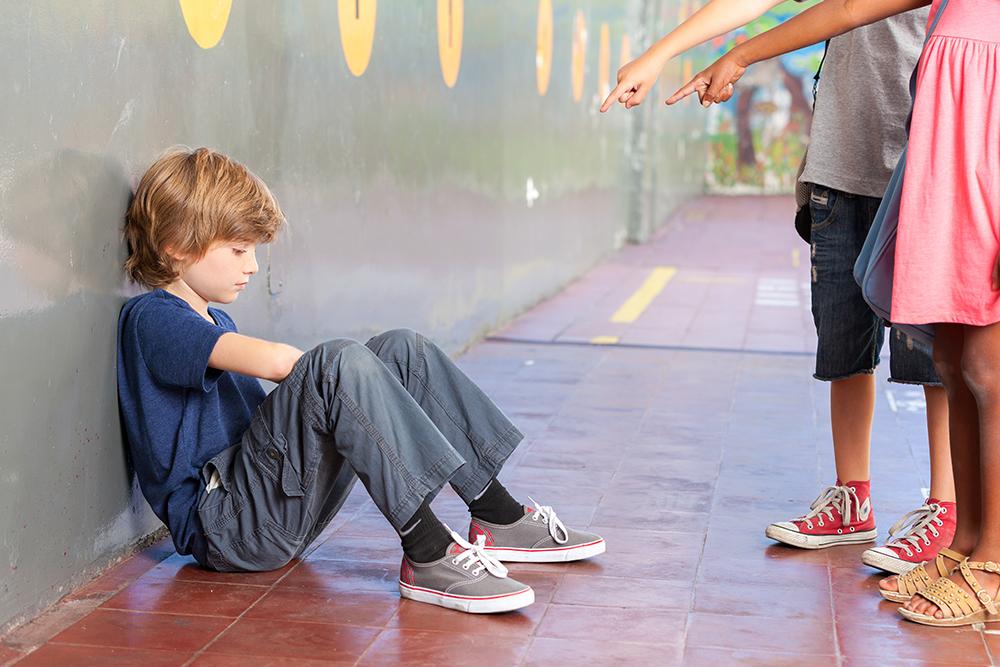 The following forms of treatment may help:
The following forms of treatment may help:
- family counseling
- adolescent therapy and family therapy
- social skills training
- problem-solving skills training
- cognitive behavioral therapy (CBT)
- behavioral therapy and behavioral family intervention
- comprehensive assessment and individualized education programs for children with a co-occurring learning disability (LD) or ADHD
Parents can offer warmth, affection, and emotional support to their children and provide them with a sense of personal control and autonomy instead of being too restrictive and controlling. They can also use positive reinforcement to promote the behaviors they want to see.
Peer and family relationships heavily influence a child’s behavior. Providing a nurturing community and friendship can help children develop prosocial behaviors.
Parents, teachers, and school personnel who notice patterns of lying, stealing, bullying, or other disruptive behaviors in a child should seek the help of a specialist. Early screening can help halt the development of antisocial behaviors, especially during preschool and middle school.
Early screening can help halt the development of antisocial behaviors, especially during preschool and middle school.
It may be helpful to talk with a mental health professional and seek a referral for a specialist. Individuals may also seek help from the Substance Abuse and Mental Health Services Administration for nearby treatment facilities and other information.
While it is typical for children to rebel and exhibit antisocial tendencies, this may signal an underlying problem in some children, especially when the problematic behaviors persist.
The longer antisocial behaviors are left untreated, the more difficult they are to address. Early-onset antisocial behaviors that are left untreated have a greater risk of persisting than those that begin in adolescence.
Addressing the behaviors early can help prevent them from progressing into more severe conditions.
Antisocial personality, sociopath (GDP) - Psychologos
The book "Introduction to Psychology". Authors - R.L. Atkinson, R.S. Atkinson, E.E. Smith, D.J. Boehm, S. Nolen-Hoeksema. Under the general editorship of V.P. Zinchenko. 15th international edition, St. Petersburg, Prime Eurosign, 2007.
Authors - R.L. Atkinson, R.S. Atkinson, E.E. Smith, D.J. Boehm, S. Nolen-Hoeksema. Under the general editorship of V.P. Zinchenko. 15th international edition, St. Petersburg, Prime Eurosign, 2007.
Article from chapter 15. Psychology of anomalies
Film "Sherlock. A Study in Pink"
Antisocial individuals have little to no sense of responsibility, morality, or interest in others. Their behavior is almost entirely determined by their own needs. In other words, they have no conscience. Whereas the average person imagines at an early age that behavior has certain limits and that pleasure must sometimes be delayed in consideration of the needs of others, antisocial persons rarely take into account the desires of others but their own. They behave impulsively, strive for immediate satisfaction of their needs and cannot tolerate frustration. Antisocial behavior has a number of causes, including membership in a criminal gang or criminal subculture, a need for attention and elevated status, a loss of contact with reality, and an inability to control impulses. Most teenage criminals and adult criminals have some interest in other people (family or gang members) and some moral code (don't betray a friend). In contrast, the antisocial person has no feelings for anyone but himself, and feels no guilt or remorse, no matter how much suffering he has caused others. Other characteristics of an antisocial personality (a sociopath for short) include an unusual ease with which to lie, a need to agitate or arouse oneself without concern for possible injury, and an inability to change one's behavior as a result of punishment. Such individuals are often attractive, intelligent, charming people, very easy to manipulate others, in short - good masters of deception. Their competent and sincere appearance allows them to get a promising job, but they have little ability to stay on it. Their restlessness and impulsiveness soon leads to a failure that reveals their true nature; they accumulate debts, abandon their families, swindle the firm's money, or commit crimes.
Most teenage criminals and adult criminals have some interest in other people (family or gang members) and some moral code (don't betray a friend). In contrast, the antisocial person has no feelings for anyone but himself, and feels no guilt or remorse, no matter how much suffering he has caused others. Other characteristics of an antisocial personality (a sociopath for short) include an unusual ease with which to lie, a need to agitate or arouse oneself without concern for possible injury, and an inability to change one's behavior as a result of punishment. Such individuals are often attractive, intelligent, charming people, very easy to manipulate others, in short - good masters of deception. Their competent and sincere appearance allows them to get a promising job, but they have little ability to stay on it. Their restlessness and impulsiveness soon leads to a failure that reveals their true nature; they accumulate debts, abandon their families, swindle the firm's money, or commit crimes. Once caught, they speak of their remorse so convincingly that they are often rescinded and given another chance. But the anti-social personality rarely lives up to his claims; what she said has nothing to do with her deeds and feelings.
Once caught, they speak of their remorse so convincingly that they are often rescinded and given another chance. But the anti-social personality rarely lives up to his claims; what she said has nothing to do with her deeds and feelings.
Two characteristics of an antisocial personality are considered indicative:
- a) lack of empathy and interest in others;
- b) lack of feelings of shame or guilt, inability to repent of one's actions, no matter how reprehensible they were (Hare, 1980).
On the nature of the antisocial personality
What factors contribute to the development of the antisocial personality? Current research focuses on biological determinants, parent-child relationships, and thinking styles that contribute to antisocial behavior.
Biological factors
There is a lot of evidence in favor of the genetic causes of antisocial behavior, especially criminal. Twin studies show that identical twins have twice the concordance for criminal behavior than related twins, indicating that such behavior is partially heritable (Rutter et al. , 1990). Adoption studies show that adopted sons' criminal cases are more similar to those of their biological fathers than to their adoptive fathers (Cloninger & Gottesman, 1987; Mednick et al. 1987).
, 1990). Adoption studies show that adopted sons' criminal cases are more similar to those of their biological fathers than to their adoptive fathers (Cloninger & Gottesman, 1987; Mednick et al. 1987).
Many studies have addressed the hypothesis that antisocial individuals have low excitability, which causes them to seek stimulation and the sensations that impulsive and dangerous actions bring to them (see Mogey, 1993). For example, one study compared two groups of male juvenile delinquents selected from a juvenile court detention cell. One group included adolescents with a diagnosis of an antisocial personality, and the other group included adolescents with adjustment reactions to negative life events. The experimenters measured their galvanic skin response (GSR) during stress (see Chapter 11). Fake electrodes were attached to both legs of the subjects and they were told that after 10 minutes they would receive a very strong but safe electric shock. The subjects were able to see a large clock, so they knew exactly when it was supposed to happen. In fact, there was no electric shock. At rest and in response to visual or auditory stimuli, there were no differences in GSR between these groups. However, within 10 minutes of waiting for an electric shock in the group with adaptive reactions, significantly more tension was manifested than in the group with antisocial behavior. At the moment when, according to the clock readings, an electric shock was supposed to take place, in the majority of subjects with adaptive reactions, GSR indicated a sharp increase in anxiety. None of the antisocial subjects had such a reaction (Lippert & Senter, 1966). Low excitability in response to disturbing stimuli can prevent antisocial individuals from learning the lesson of the punishment they have received, since they will not, like most people, experience it as a nuisance and will not worry about foreseeing it again.
In fact, there was no electric shock. At rest and in response to visual or auditory stimuli, there were no differences in GSR between these groups. However, within 10 minutes of waiting for an electric shock in the group with adaptive reactions, significantly more tension was manifested than in the group with antisocial behavior. At the moment when, according to the clock readings, an electric shock was supposed to take place, in the majority of subjects with adaptive reactions, GSR indicated a sharp increase in anxiety. None of the antisocial subjects had such a reaction (Lippert & Senter, 1966). Low excitability in response to disturbing stimuli can prevent antisocial individuals from learning the lesson of the punishment they have received, since they will not, like most people, experience it as a nuisance and will not worry about foreseeing it again.
Social factors
Although children who develop antisocial behavior may have a biological predisposition to it, studies show that they are also exposed to an environment conducive to antisocial behavior (Rutter, Qumton & Hill, 1990; Cadoret & Cain, 1980; Cloninger & Gottesman, 1987).
The quality of parental care received by a child who is prone to hyperactivity and behavioral problems greatly affects whether he develops a full-blown antisocial personality (Loeber, 1990). One of the best indicators of children's behavioral problems is the level of parental supervision: children who are often left unsupervised or poorly supervised for a long time are much more likely to develop a pattern of criminal behavior. A closely related variable is parental indifference: children whose parents do not participate in their daily lives (for example, do not know who their children are friends with) are more likely to become antisocial. When parents interact with children with behavioral problems, the interaction is usually characterized by hostility, physical abuse, and ridicule (Patterson, DeBaryshe & Ramsey, 1989). It seems that in such families, parents often ignore the child or are not at home, but, nevertheless, when the child commits an offense or otherwise angers the parent, he is given a severe spanking. Confirmation that these parental shortcomings are the cause and not just a correlate of children's behavioral problems is the fact that interventions aimed at overcoming these shortcomings can successfully deal with children's behavioral problems (Lochman et al, 1991). Biological and familial factors contributing to behavioral problems often overlap. Children with behavioral problems often have neuropsychological problems resulting from maternal drug use, poor intrauterine nutrition, pre- and post-natal toxicity, abuse, birth complications, and low birth weight (Moffitt, 1993). Such children are more irritable, impulsive, clumsy, overactive, inattentive, and learn material more slowly than their peers. This makes parental care more difficult for them, and they are at increased risk of abuse and neglect by their parents. In turn, the parents of these children are most likely teenagers or have psychological problems themselves that contribute to ineffective or rude, ineffective parenting.
Confirmation that these parental shortcomings are the cause and not just a correlate of children's behavioral problems is the fact that interventions aimed at overcoming these shortcomings can successfully deal with children's behavioral problems (Lochman et al, 1991). Biological and familial factors contributing to behavioral problems often overlap. Children with behavioral problems often have neuropsychological problems resulting from maternal drug use, poor intrauterine nutrition, pre- and post-natal toxicity, abuse, birth complications, and low birth weight (Moffitt, 1993). Such children are more irritable, impulsive, clumsy, overactive, inattentive, and learn material more slowly than their peers. This makes parental care more difficult for them, and they are at increased risk of abuse and neglect by their parents. In turn, the parents of these children are most likely teenagers or have psychological problems themselves that contribute to ineffective or rude, ineffective parenting. Therefore, in addition to having a biological predisposition to destructive antisocial behavior, these children experience parental treatment that encourages such behavior. In a study of 536 boys (Moffitt, 1990) found that those who had both neurophysiological deficiencies and an unfavorable home environment scored 4 times higher on the aggression scale than boys who had neither neuropsychological deficiencies nor an unfavorable home environment.
Therefore, in addition to having a biological predisposition to destructive antisocial behavior, these children experience parental treatment that encourages such behavior. In a study of 536 boys (Moffitt, 1990) found that those who had both neurophysiological deficiencies and an unfavorable home environment scored 4 times higher on the aggression scale than boys who had neither neuropsychological deficiencies nor an unfavorable home environment.
Personal factors
Children with behavioral disorders process information about social interactions in such a way that they develop aggressive reactions to these interactions (Crick & Dodge, 1994). They expect other children to be aggressive towards them, and interpret their actions based on this assumption, instead of relying on signs of a real situation. In addition, children with behavioral disorders tend to consider any negative action directed at them by their peers (for example, if someone took their favorite pencil) is not accidental, but deliberate.![]() When deciding what action to take in response to a perceived peer provocation, a child with a behavioral disorder will choose from a very limited set of responses, usually including aggression. If such a child is forced to choose something other than aggression, he makes chaotic and ineffective reactions and, as a rule, considers everything except aggression to be useless and unattractive. Children who think of social interaction in this way tend to exhibit aggressive behavior towards others. Retribution may await them: other children beat them, parents and teachers punish them, and they are perceived negatively by society. These responses, in turn, reinforce their belief that the world is against them and cause them to misinterpret the future actions of those around them. This can create a vicious circle of interactions that support and inspire the child's aggressive and antisocial behavior.
When deciding what action to take in response to a perceived peer provocation, a child with a behavioral disorder will choose from a very limited set of responses, usually including aggression. If such a child is forced to choose something other than aggression, he makes chaotic and ineffective reactions and, as a rule, considers everything except aggression to be useless and unattractive. Children who think of social interaction in this way tend to exhibit aggressive behavior towards others. Retribution may await them: other children beat them, parents and teachers punish them, and they are perceived negatively by society. These responses, in turn, reinforce their belief that the world is against them and cause them to misinterpret the future actions of those around them. This can create a vicious circle of interactions that support and inspire the child's aggressive and antisocial behavior.
Borderlines
Over the past two decades, borderline personality disorder has been the subject of considerable attention in popular print, clinical and research publications in psychology.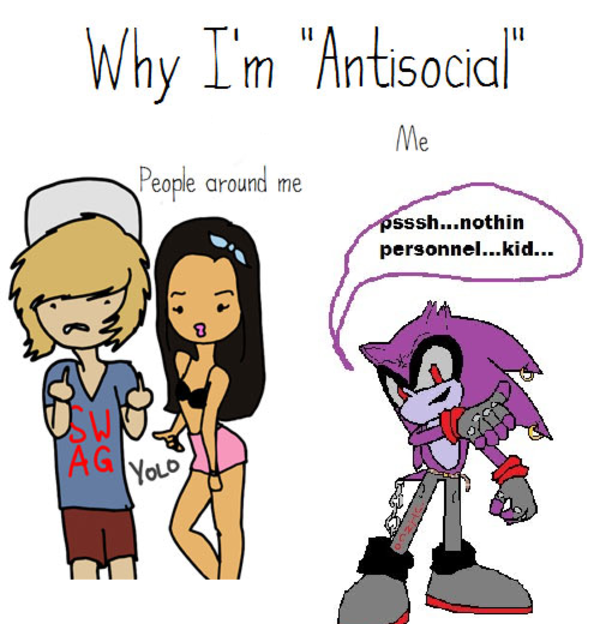 The diagnostic category for borderline personality disorder was only included in the third edition of the DSM in 1980. However, clinicians have long used the term "borderline" to refer to people who appear to be teetering on the edge between severe neurotic manifestations (such as emotional instability) and bouts of psychosis (Millon, 1981). See →
The diagnostic category for borderline personality disorder was only included in the third edition of the DSM in 1980. However, clinicians have long used the term "borderline" to refer to people who appear to be teetering on the edge between severe neurotic manifestations (such as emotional instability) and bouts of psychosis (Millon, 1981). See →
Loss of connection with the world contributes to antisocial disorder - News - IQ Research and Education Portal - National Research University Higher School of Economics
Author of the report:
Alfried Lenglet, psychotherapist, professor at the National Research University Higher School of Economics.
Everyone can behave antisocial from time to time. Examples of such antisocial behavior are parking in the wrong place, violating traffic rules, ignoring the queue, and generally selfishness towards others. However, the clinical picture of antisocial disorder looks more serious. A person suffering from it can commit a serious crime and not experience the slightest feeling of guilt, said Alfried Lenglet at a public lecture at the Higher School of Economics on the topic of antisocial personality disorder.
Criminality as an attempt at self-help
Usually a person automatically adapts to society and its laws. In antisocial disorder, this ability to adapt is absent. The individual puts himself in antiposition and acts against society. In Europe, as Alfried Lenglet said, a less depreciating term is now used - antisocial personality disorder, which, among other things, implies a lack of connection with society. A person with antisocial personality disorder is unable to relate to the outside world.
“It's a lot more than just being antisocial. This is deep suffering,” Lenglet said. Isolation is hard to bear, so a person begins to act in such a way that it is bearable. Criminality thus becomes an attempt at self-help.
“These people don't take anyone into account and can go over their heads. They can act against others, nature, animals, and even against themselves. They are easily irritable, and even a small impact can trigger a strong reaction, ”said the psychotherapist.
Being close to a person suffering from an antisocial disorder is a great test for his environment and family. It is impossible to have a dialogue with him, because he does not have internal structures in order to understand what the other has in mind. It makes the people around you helpless. The family, the group, is powerless to change the behavior of such a person, Lenglet confirmed.
Picture of the disorder
The overall picture of antisocial disorder has seven specific features that are described in the International Classification of Diseases. Most people with antisocial personality disorder, the therapist explained, have an incomplete, partial set of these traits. For a confident diagnosis, at least five of these features must be observed.
The main central symptom is emotional indifference and indifference. Such people are not emotionally included, they cannot perceive the feelings of another and share them. They suffer from a lack of empathy. Nothing touches them, even criticism of their own address, the professor said.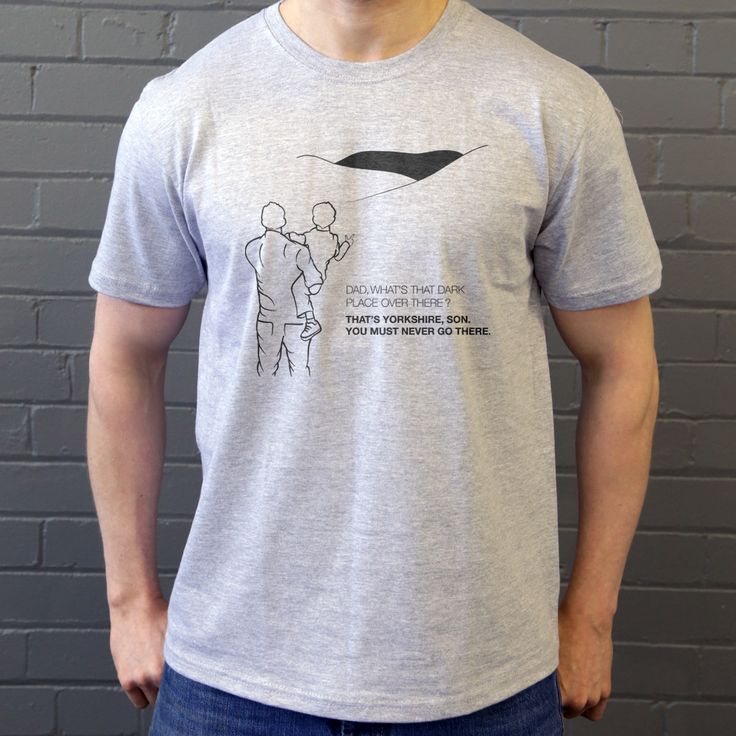
The next two traits are logically related to the first. It is a constant lack of responsibility and disregard for social norms and responsibilities.
The fourth sign of antisocial disorder is that the person cannot be kept in a permanent relationship because there is nothing of value to him.
The fifth symptom is an inability to process information and an intolerance of frustration. “Aggressive and even violent behavior starts very quickly. If something happens that such a person does not like, he reacts inappropriately strongly - because he has a feeling that he has a right to it, ”said the psychotherapist.
The sixth symptom is the absence of feelings of guilt. At the same time, punishment has no effect; a person with antisocial disorder has no fear of punishment, even if it is threatened with repetition.
And the seventh sign of a disorder is that those suffering from it do not feel light and relaxed. They are subject to constant irritability.
“One might think that this picture is more correlated with low social strata - with the marginal strata of society, with criminal circles. But since this is precisely a personality disorder, we find it at all social levels, even among top managers,” said Alfried Lenglet. “There are many such people in politics.” The psychotherapist cited as an example a major German top manager who, with his eccentric and thoughtless actions, provoked a 50% drop in the value of the company's shares.
One of the reasons people with antisocial disorder may act selfishly or illegally is simple boredom and a desire for fun. At the same time, "entertainment" can be the most terrible - up to the murder of people who accidentally fall under the arm.
Children must not be deceived and betrayed
What are the causes of antisocial disorder?
The main one, according to Lenglet, is the traumatic experience. Such people grow up in fake, insincere relationships. “Parents act like they love and care for their children, but they don't really feel it. Children trust their parents, but again and again they feel deceived, ”said the psychotherapist. As a result, they learn to behave similarly.
Children trust their parents, but again and again they feel deceived, ”said the psychotherapist. As a result, they learn to behave similarly.
When such children grow up, there are no rules for them, nothing that is important and valuable, absolutely any behavior is normal for them.
During the lecture, Lenglet also mentioned para-existential disorder, when a person does not feel himself and tries to find himself through the goals that he sets for himself. “I’m nobody if I don’t make a good career,” “I’m nobody if I’m not successful,” this is how a person suffering from paraexistential disorder feels. Friends in this case turn into a means to an end, and marriage is viewed from the point of view of usefulness, for example, for a career. The environment is functional.
“It looks like a person lives meaningfully. But in fact, he does not follow the existential meaning, he leaves it in pursuit of the goal, the need, ”said the psychotherapist.
Para-existential personality disorder, in his opinion, is similar to antisocial personality disorder.
